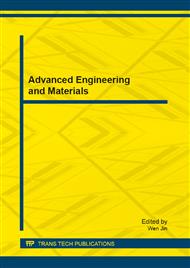[1]
F. Dirgenali, S. Kara, ¸S. Okkesim , Estimation of wavelet and short-time Fourier transform sonograms of normal and diabetic subjects' electrogastrogram, Computers in Biology and Medicine 36, 2006, p.1289–1302.
DOI: 10.1016/j.compbiomed.2005.07.005
Google Scholar
[2]
J.M. Girault, Contribution of Signal Processing Techniques to the Analysis and Detection of embolic signals , Doctoral thesis, François Rabelais University, Tours, December (1999).
Google Scholar
[3]
Z. Guo, Time-frequency representation and pattern recognition of Doppler Blood Flow Signal for Stenosis Classification, PHD thesis, McGill University, Montreal, July (1993).
Google Scholar
[4]
K. Kaluzynski, Selection of spectral analysis method for assessment of velocity distribution based on the spectral distribution of ultrasonic Doppler signal, Med & Bio. Eng & Comput., 27, 1989, pp.463-469.
DOI: 10.1007/bf02441462
Google Scholar
[5]
K. Kaluzynski, T. Palko, Effect of method and parameters of spectral analysis on selected indices of simulated Doppler spectra, Med. Biol. Eng. Comput. 31, 1993, p.249–256.
DOI: 10.1007/bf02458044
Google Scholar
[6]
S. Kara, S. İçer, N. Erdogan, Spectral broadening of lower extremity venous Doppler signals using STFT and AR modelling, Digital Signal Processing 18, 2008, p.669–676.
DOI: 10.1016/j.dsp.2007.09.002
Google Scholar
[7]
P.I.J. Keeton, F.S. Schlindwein, Spectral broadening of clinical Doppler signals using FFT and autoregressive modelling, European Journal of Ultrasound 7, 1998, p.209–218.
DOI: 10.1016/s0929-8266(98)00032-9
Google Scholar
[8]
F.S. Schlindwein and D.H. Evans, Selection of order of autoregressive model for spectral analysis of Doppler ultrasound signals, Ultrasound Med Biol, 16(1), 1990, pp.81-91.
DOI: 10.1016/0301-5629(90)90089-u
Google Scholar
[9]
C. Simon, M. Schimmel, J.J. Dañobeitia, On the TT-Transform and Its Diagonal Elements, IEEE Trans. Signal Process., VOL. 56, NO. 11, November 2008, pp.5709-5713.
DOI: 10.1109/tsp.2008.929670
Google Scholar
[10]
P.J. Vaitkus, A comparative study and assessment of Doppler ultrasound spectral estimation techniques Part II : Methods and result, Ultrasound Med Biol, 14(8), 1988, pp.673-688.
DOI: 10.1016/0301-5629(88)90024-5
Google Scholar
[11]
Y. Zhang , L. Xu, J. Chen, H. Ma, X. Shi, Correction for broadening in Doppler blood flow spectrum estimated using wavelet transform, Medical Engineering & Physics 28, 2006, p.596–603.
DOI: 10.1016/j.medengphy.2005.09.002
Google Scholar


